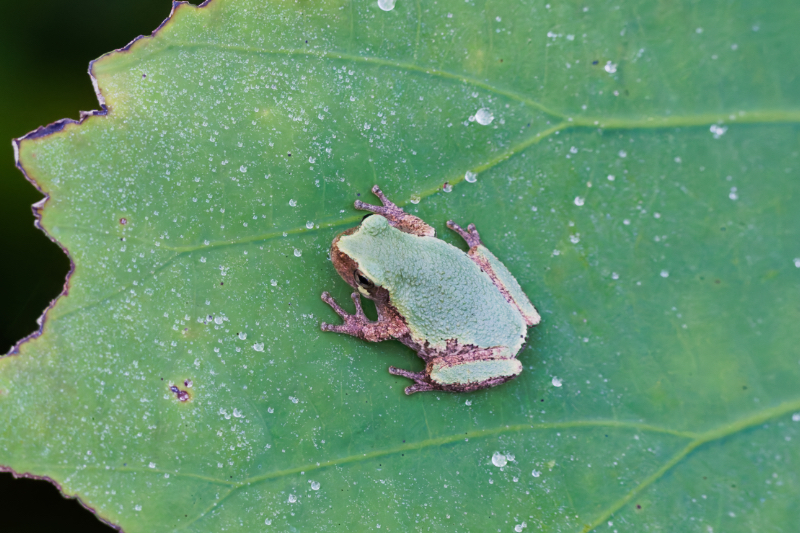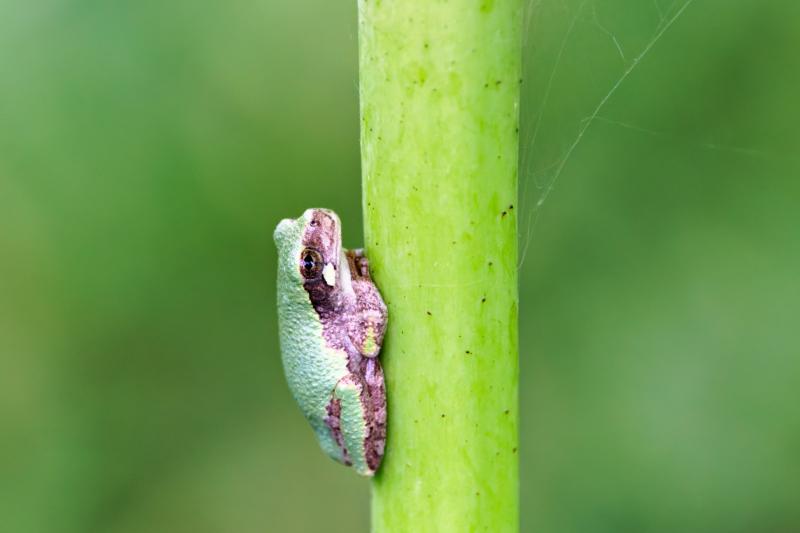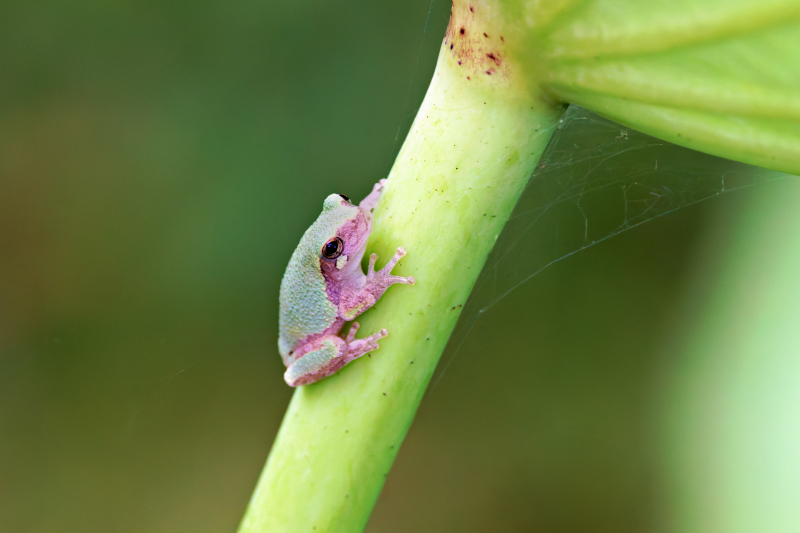Last year, on September 20, 2023, I shared my excitement about photographing my first Gray Tree Frog at the Sequoyah National Wildlife Refuge in Oklahoma. Today, I’m thrilled to revisit this topic, having spent this summer photographing several more Gray Tree Frogs from the Phillip Parks Memorial Fishing Pier at the same refuge. The first thing you’ll notice in the photos I’m sharing today, compared to those from last September, is the striking difference in the color of these fascinating amphibians.

The Chameleon-like Gray Tree Frog
The Gray Tree Frog (Hyla versicolor) is a remarkable amphibian known for its ability to change colors, making it a true master of camouflage in its natural habitat. This adaptive trait allows the frog to blend seamlessly with its surroundings, providing protection from predators and enhancing its chances of survival.
Color-Changing Ability
Gray Tree Frogs can swiftly alter their appearance, shifting between various shades of gray, green, and brown. This rapid color-changing process can occur within just a couple of hours. The frog’s scientific name, Hyla versicolor, aptly describes this characteristic, as “versicolor” means “variable color” in Latin.
The Color Palette of the Gray Tree Frog Includes:
- Bright green
- Various shades of gray
- Brown hues
- Mottled combinations resembling lichens or tree bark
In some cases, they can even appear creamy white or tan. Regardless of their primary color, all Gray Tree Frogs have bright yellow or orange markings under their thighs, which may serve as a warning to predators.

Factors Influencing Color Change
Several factors influence the Gray Tree Frog’s color-changing ability:
- Environment: The frog’s color often matches its immediate surroundings, helping it blend in with tree bark, leaves, or other natural elements.
- Temperature: Gray Tree Frogs tend to become darker at night and lighter in warm, sunny areas.
- Time of Day: As nocturnal creatures, their coloration may shift between day and night.
- Age: Young Gray Tree Frogs are typically bright green, gradually developing their color-changing abilities as they mature.
Camouflage and Survival
The Gray Tree Frog’s color-changing ability is primarily a survival mechanism. By blending in with their environment, these frogs can:
- Avoid detection by predators such as herons, egrets, snakes, raccoons, and skunks.
- Improve their hunting success by remaining hidden from potential prey.
Their camouflage is so effective that they can be challenging to spot even when perched on walls or windows of buildings.
Habitat and Behavior
Gray Tree Frogs are arboreal, spending most of their lives in trees and only descending for breeding purposes. They inhabit forested areas near water sources such as swamps, ponds, and lakes. Their large, sticky toe pads enable them to climb trees, bark, and even smooth surfaces like glass.
During winter, Gray Tree Frogs employ another remarkable survival strategy. They can freeze solid, with their heart and breathing stopping temporarily. This is made possible by a glycerol-based antifreeze in their bodies, allowing them to thaw and resume normal functions in spring.

A Testament to Nature’s Ingenuity
In conclusion, the Gray Tree Frog’s ability to change colors is a testament to nature’s ingenuity in adaptation. This remarkable trait, combined with their arboreal lifestyle and unique winter survival mechanism, makes them one of the most fascinating amphibians in North America.
As I continue to photograph and observe these incredible creatures, I’m constantly amazed by their adaptability and the beauty they bring to the natural world. Stay tuned for more insights and photographs from my adventures at Sequoyah National Wildlife Refuge!
